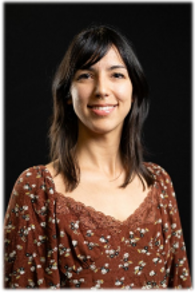Recent physics alum Dr. Elise Rosky and Geophysics PhD candidate Gabriel Ahrendt recently attended COP28, the Conference of Parties (COP) in Dubai, United Arab Emirates. It is the largest climate conference in the world. Over 40,000 people from government, academia, research, non-governmental organizations, commerce, and elsewhere attend the annual United Nations conclave. They discuss the latest research and insights concerning climate change and negotiate solutions to minimize the impacts of climate change on the planet.
“I learned that scientists are being asked to provide better data about the oceans, mountain ecosystems, and severe weather forecasting,” said Rosky. “But it is made clear that this needs to be done in an interdisciplinary way, that gives communities ownership of the information, is inclusive of indigenous world views, and builds scientific capacity within each country. Because addressing a crisis is complex and involves social aspects as well as logical and technological aspects, without the aforementioned characteristics, the science is unable to create the intended impact on communities that it aims for.”
Rosky moderated multiple panels, including a panel titled “The science-policy interface: How can researchers shape critical climate policies?” The panel included Raina Taitingfong, Indigenous Chamoru and Wildlife Refuge Specialist; Bradley R. Colman, President of the American Meteorological Society; Mariana Rocha de Souza, coral reef biologist; Dr. Ana Spalding, professor of interdisciplinary social sciences and environmental studies; Dr. Andriannah Mbandi, chemical engineer and atmospheric scientist; and Shikha Bhasin, science and policy advisor for UN environmental programs.
Dr. Rosky completed her PhD in fall 2023 working with her co-advisors Raymond Shaw and Will Cantrell. Her thesis Large cloud droplets and the initiation of ice by pressure fluctuations: Molecular simulations and airborne in-situ observations ties the molecular physics of ice-nucleation to the growth and subsequent freezing of droplets in clouds.
You can read more about Rosky and Ahrendt’s reflections on the climate conference in the Daily Mining Gazette.
About the Physics Department
Physicists at Michigan Technological University help students apply academic concepts to real-world issues. Our physicists take on the big questions to discover how the universe works—from the smallest particles to the largest galaxies. The Physics Department offers three undergraduate degrees and three graduate degrees. Supercharge your physics skills to meet the demands of a technology-driven society at a flagship public research university powered by science, technology, engineering, and math. Graduate with the theoretical knowledge and practical experience needed to solve real-world problems and succeed in academia, research, and tomorrow’s high-tech business landscape.
Questions? Contact us at physics@mtu.edu. Follow us on Facebook, Twitter, and YouTube for the latest happenings. Or read more at the Physics Newsblog.
